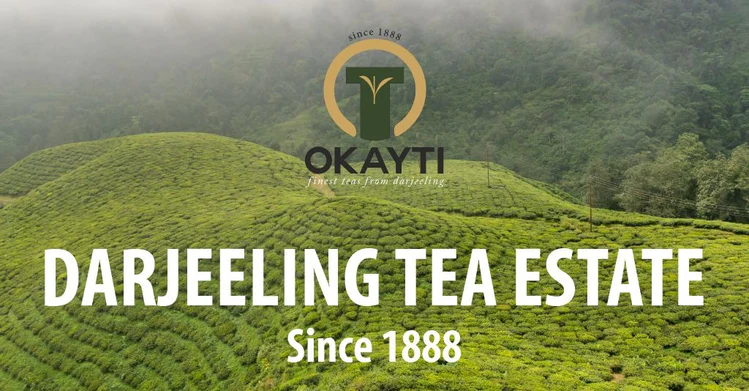Darjeeling Tea Estates
It certainly didn’t happen in a few days. The making of Darjeeling Tea Estates and the subsequent settlements is a history spanning several decades that involved intense planning, government approvals, experiments, observation and movement of several thousand people who would put their sweat to build what is now known as Darjeeling.
A distant frontier of Darjeeling was of no significance to the colonial prowess until they realised that Dorje-ling as erstwhile known was the perfect haven to escape the sweltering heat of Calcutta summer. Then prosperous cities of India had Mussoorie, Almora, and Ootacamund as summer ‘capitals’ but the people of Bengal Presidency had to brave the cruel scorching summer. Cherrapunji was briefly set up as an experimental hill station that turned out to be the wettest place on Earth.
Today as we take the Hill Cart to Darjeeling, within a few minutes we start seeing the green carpet of tea bushes on either side of the road. Originally made for the bullock carts, hundreds of vehicles ply daily on the Hill Cart road today. The tea bushes are now a part of the landscape and it seems like they were always there. But there lies a fascinating history of more than 100 years.
Let’s rewind a bit, Darjeeling or Dorje-ling as it was known then, was part of Sikkim Kingdom. Sparsely populated, according to recorded history, only Lepchas wandered through the mountains settling for a few years in a place to cultivate and moving to some other. In the 1780s Prithivi Narayan Shah’s Gorkha Expansion project annexed Sikkim’s territory till Teesta. The area comprising what today is the Darjeeling district remained with Nepal till it was ceded to the British after the Anglo-Nepal War of the 1810s. British returned the ceded land to Chogyal of Sikkim.
Everything remained the same until 1829 when a survey was carried out to follow up on the recommendation of J. W. Grant, the commercial resident of Malda. Captain Llyod claims to be the first European to set foot in Darjeeling and the report he sent back was positive, Darjeeling indeed had home-like weather. There was a second survey, now headed by the Deputy Surveyor-General, Capt. Herbert and he too gave a positive report.
The only concern now was to acquire the region from the Raja of Sikkim. There arose a border dispute between Nepal and Sikkim and Captain Lloyd was called upon to settle the dispute. Llyod took this opportunity to discuss the acquisition of Darjeeling and offered either money or land in exchange. Raja of Sikkim put forth his demands which could not be made for legal reasons.
History gets a little confusing here. The British had likely dropped the Darjeeling Plan for many reasons but the Raja of Sikkim had already forwarded the land deed as a gift to the British. After several exchanged letters finally in the year 1836 Col. Llyod and Dr Chapman arrived at Darjeeling to live for nine months to make a detailed journal of their itineraries and weather. They submitted their report the next year where they reported extensively about the suitability of Darjeeling as a place for a sanatorium.
1839 was an important year in the history of Darjeeling, the construction of Hill Cart Road, the lifeline of Darjeeling was started. The journey began but the pace was slow. For starters, the entire region was so dense and there was a major dearth in the supply workforce.
It took several years and with the constant planning, British resources along with the unfaltering labour of Indigenous people, Darjeeling was built block by block. Around the same time, the feasibility of planting tea in the mountains of Darjeeling was been accessed. Dr Campbell, the Govt. surgeon posted in Darjeeling first planted a few seeds of Camellia Sinensis around his bungalow. Seeing the success, he moved to Lebong and planted more tea.
Let’s fast forward a bit to 1856 when the first Darjeeling Tea Estate was established. In just 10 years the number of tea gardens rose to 39 with a total crop production of 21,000 kilograms. Darjeeling Tea gave momentum to the more rapid growth of the region. As Darjeeling tea gardens mushroomed in the hills, the settlements of the people who build those gardens also started to appear. Picturesque cottages built in the English taste flourished.
The first hotel in Darjeeling was built around the same time by David William, the ‘Fortnum & Mason’ of Calcutta. Newspapers in Kolkata ran ads for bookings, inviting guests to beat the summer heat of the plains. The milestone was set and there was no looking backwards.
For history nerds like myself, I would recommend Fred Pinn’s ‘The Road of Destiny – Darjeeling Letters 1839’. It is a fascinating read with a perspective grounded in the reality of the time when our beloved Darjeeling was just taking shape.



One thought on “Darjeeling Tea Estates – A Glance Into The Glorious Past”